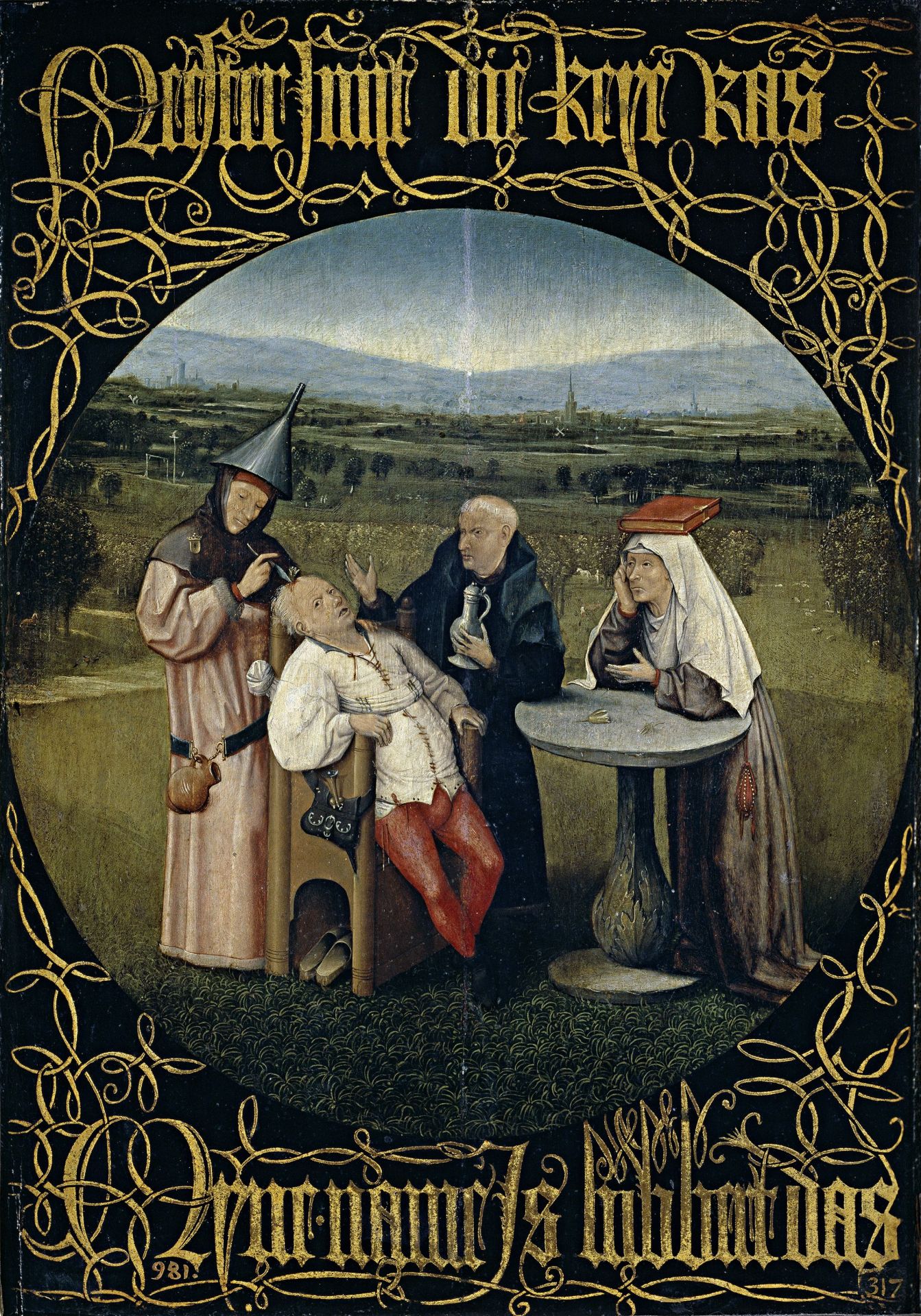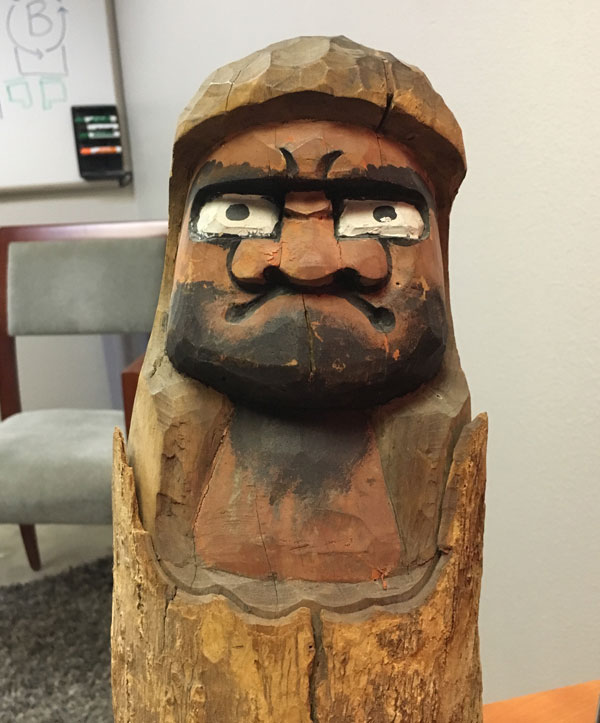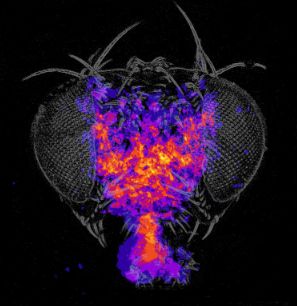Adventures in the Trade
The Flies of Hieronymus Bosch
The Dread of Night Visions, the Night Shift, and Doomed Insects in Stone Carving.
"Visions of the Hereafter, Hieronymus Bosch, circa 1490. Galleria dell'Accademia Venezia, Venice
Adventures in the Trade
The Flies of Hieronymus Bosch
"Visions of the Hereafter," Hieronymus Bosch, circa 1490. Galleria dell'Accademia Venezia, Venice
By Jason Nottestad
I might have made a career of cutting limestone and marble into exterior building components if it weren’t for the visions of Hieronymus Bosch and dying stone shop flies.
I got my start in the construction industry after a family friend gave me a job doing historic-preservation work straight out of college. My U. of Iowa English Literature degree didn’t prepare me for the trades, but I’d read a bit too much Hemingway and convinced myself the office life was not for me.
On that first job I worked restoring 19th-century Norwegian American log cabins and barns. I learned how to square and dovetail a log, limewash a wall, and mix mortar to the proper consistency for tuck pointing, chinking, and bricklaying.
I also learned how delicious a break-time cup of tea tastes poured from a thermos on a cold autumn day; how a plain sandwich warmed over a woodstove becomes gourmet; and how there is no better smell combination than cedar shingles and falling leaves. It wasn’t Hemingway but, for a guy not planning a career as a white hunter, it wasn’t a bad start.
When I moved on from that job it was to more preservation work, this time with just stone and brick. As part of my new job, I spent a winter working in an industrial-scale stone shop, turning Georgia marble into balusters. A lathe with a saw cut the baluster pattern into the marble block and I sat at a second lathe and removed the saw kerfs, ground them smooth, and honed the curved surfaces.
The work was dusty, noisy, and monotonous, but there was also a rhythm to it. And there was a certain appeal in going to a shop every day instead of climbing around rickety scaffolding on job sites.

The bucolic days of my first job after college, when family friend Brian Betteridge showed me the satisfaction of a hot-tea break.
The night foreman thought his crew of the formerly incarcerated was capable of violence if they were pushed in the wrong way, and he had a family that depended on him.
For Christmas that year I’d gotten a book about the paintings of Hieronymus Bosch, and at night I’d study his chaotic visions of grotesque people, fantastical creatures, and hellscapes. A 16th-century Dutch painter, Bosch’s works were attempts to steer people onto the path of righteousness. To the modern secular eye, they are a kind of psychedelic horror show. Bosch was the perfect complement to the long and bleak midwestern nights.
When my preservation job ended the following autumn, I headed back to the stone shop to see if they were hiring. They were, and I started the following week.
My brief shop experience as a contract worker hadn’t really prepared me for life as a full-time stone shop tradesman. I knew and enjoyed the work, but I would quickly realize the work is only part of a job -- the work environment is also key.
Our 12-hour shifts at the shop began at 5 a.m., as we replaced the overnight shift of the same length. Every morning was a surprise, as we never knew what the chemically motivated men of questionable backgrounds who made up the night crew would produce.
Sometimes we’d arrive to find a near Herculean amount of work had been done overnight and our production schedules for the day ahead could be met with ease. Other times we’d find a confused collection of pieces cut backwards and upside down, with cut sheets and tools scattered. Our day ahead would be difficult.
Still other times we’d arrive to find the night crew hadn’t picked up a tool and was busy blowing dust off the floor with the air hoses to make it look like they had been hard at work the entire night long … just in case the general manager showed up at 5 a.m. as well, which he seldom did. Our day ahead would be impossible.
We’d point this out to the night-shift supervisor, but he didn’t care. He thought his crew of the formerly incarcerated was capable of violence if they were pushed in the wrong way, and he had a family that depended on him. He made jokes about combat pay. Nobody else wanted his job.

This work by Bosch is "Cutting the Stone," also known as "The Extraction of the Stone of Madness" or "The Cure of Folly." Maybe art really does foreshadow life.
The ex-cheesemaker on the crew had lost his cheese job after drunk-driving into a stone barn three quarters of a mile off the road.

The shop's GM perpetually wore a scowl matching this carving of the Buddhist monk Bodhidhanna my son and I found at a Dallas flea market.
One time we arrived to find the entire 50,000 ft² building engulfed in a cloud and the flashing lights of fire trucks surrounding the place. The night crew had mixed a gallon of 5-to-1 ratio epoxy at a 1-to-1 ratio in a wheelbarrow and smoked the entire place out.
Masked firemen had rolled the offending mixture out into the parking lot so the reaction could work itself out in the open air. The guys of the night crew stood off to the side smoking cigarettes and staring at the smoldering mess like zombies.
The day-shift crew was different – a mix of guys plus one woman, who learned to cut stone on the job. (No apprentice program graduates in our lot.) We had an ex-lawyer, a restaurant co-owner, an aspiring artist, and an ex-cheesemaker, among others.
The cheesemaker had lost his cheese job after drunk-driving into a stone barn three quarters of a mile off the road. It was, he pointed out, a stone barn. Now he walked to work. He’d spent some time on the night shift.
I was lucky, the GM told me, to be placed on the day shift. Staying on the day shift would only happen if I showed up on time every day and didn’t make mistakes.
He was a rotund man, with a midsection girth poised precariously over his pencil legs, giving him an egg-like, Humpty Dumpty appearance. He had a penchant for smoking cheap cigars and was winded quickly. His only joy in the world seemed to be finding mistakes.
In the shop he’d move from piece to piece, leaning on them for support. With tape measure in one hand, cigar in the other, he’d search for fabrication errors. If he found one, he’d grab his cigar and throw it on the ground like a centerfielder gunning for home plate.
“Goddamit!” he’d scream, and then totter back into his office to figure out what material we’d need for the replacement piece and when to fit it into the schedule. His relevance to the company seemingly depended on our mistakes.
If he felt his position threatened, it was probably because we didn’t really make that many mistakes. Most of our pieces were straightforward- limestone windowsills, wall caps, lintels, and cladding. Thousands of square feet of cladding, cut into rectangles, with bolt holes for lifting the pieces and T41 slots for securing them.
In my dreams, the blocks pleaded with us not to cut them. The numbers on tape measures laughed and changed positions when you tried to read them.
The limestone cladding flowed through the shop with relative ease. The occasional church window tracery or arched doorway was produced without trouble - but cladding was the production monster to be tamed.
We normally worked three of the 12-hour days- show up on time for all 36 hours, and the company then paid you the other four as a bonus. Our three-day work weeks soon became four, and sometimes five, with cladding taking over our lives and becoming an exhausting grind.
But that grind didn’t equate to profitability. Hard-run machines began to break and not get fixed. Our maintenance manager told us he only had the budget to fight serious fires. In this case, the serious fire was a block saw meant to expand our cladding work in granite.
The saw had arrived from Europe and was set and assembled with a precision that inspired confidence. The first few blocks that ran through the machine had cuts that were smooth and plumb, and it looked like the machine was going to be a salvation. But problems crept in.
The saw blades, 12’-high diamond tipped monsters, were soon out of temper, and the cuts began to wander. The day-shift operator would program the machine to cut a block into cladding overnight and come in the next morning to find slabs 4” wide at the top and 6” at the bottom. Expensive doorstops.
The end of a drilling core had been left in one of the blocks and when the blade contacted it all of the diamond-blade tips shot into the concrete wall like a machine gun. An expensive delay, and more granite cladding that would miss a delivery date.
The difficulties with the block saw were the beginning of a grim time. Our water-recycling pond flooded and iced over the road next to the plant. The snarl of traffic from sliding cars backed up rush-hour traffic for blocks and brought unwanted scrutiny from the city.
A flatbed and the county sheriff showed up one day and repossessed one of our forklifts. We regularly stood in line at the company’s bank on payday to cash our checks, sometimes being turned down because their line of credit had been reached. Customers showed up to find their blocks had been cut for a different project.
I was exhausted from too much overtime and soon my image of the stone shop began to seem a bit too Boschian. In my dreams, the night-shift crew took on demonic appearances. The egg-shaped GM toppled over and shattered. The air hoses snaked through the shop whistling tunes. The blocks pleaded with us not to cut them. The numbers on tape measures laughed and changed positions when you tried to read them.
Rumors of pending layoffs and the continued threat of being sent to the night shift hung in the air. When the ex-lawyer announced he was leaving to start a granite countertop shop, I knew it was time to act. He always advocated for keeping me on the day shift, and without his help I knew my turn with the night crew was inevitable..

Bosch's "Death and the Miser" became the stuff of my workplace dreams.
The dust piles we created ran through your fingers like water when you tried to pick up a handful. It felt almost weightless.

Studies show that flies can brush off dust, but it takes 20 minutes. Victims of the shop didn't have that kind of time.
I’d heard of a second shop in town that also cut limestone and I applied. I only asked one question during my interview- did they work more than one shift.
They did not. I began there before ever working a night.
My new shop, smaller in scale and more focused on limestone, produced more-intricate pieces. I was able to carve more and drill fewer holes, and I enjoyed the work.
But this shop ran on ancient equipment. Our stone planing machine said Cleveland, 1911 on the side, and the man who regularly operated it was about the same age.
The behemoth machine had a huge sliding table and ran on belt drives. The cutting head had to be set to height moving downward, so the belts would be tight, and normally cut about ¼” of stone at a time. When a new guy forgot this part, the machine head jumped down and caught 6” inches of limestone.
The entire head was sheared from the machine and the bolts that held it together shot through the 20’-high roof. It was down for six weeks while a company somewhere in Ohio machined a new head from a steel block.
The air-cleaning machines were similar. They were overpowered and unreliable, and the dusty air was our normal. Grinding Indiana limestone into a fine powder has a weird effect on it. The dust piles we created ran through your fingers like water when you tried to pick up a handful. It felt almost weightless.
The dust was so thick sometimes I couldn’t see the man working at the bench 10’ from me. We wore masks continually and the men who smoked punched holes in their masks and puffed through them. Sometimes they’d smoke so far their cigarettes would burn a small black ring around the hole in the mask.
When the air machines were working, the power cleaned the air so thoroughly that the items of the shop seemed to come into perfect focus, as their colors jumped out at you. The yellow paint on the CAT forklift was never so vibrant as when the machines started working after being offline.
But the flies were the problem. The shop was situated on the edge of town, near a wetland, and the largest flies I’d ever seen regularly visited the shop. They’d fly in and buzz around the place, landing and taking off again.
They didn’t realize the whole time their wings were being coated with the fine dust, and it was weighing them down. One time they would land and when they tried to fly off again, they could not. You could walk right up and put your finger near the fly, but it would not move.
It was unnerving. The dust would build up around it and soon it had disappeared. Buried in stone, in a way. If Hieronymus Bosch was looking for a way to portray the horror of a fly’s death in one of his paintings, this method would be a candidate. These were the flies of Hieronymus Bosch for sure.
The flies depressed me. They had an entire wetland next door. They could live out their lives amongst the flowers and the grasses and sunshine. And yet, they had stumbled into this grey world and met their doom.
When the ex-lawyer who had started his granite countertop shop called me up and asked me to work for him, I jumped at the chance. I had enjoyed the work, but I was ready to be done with the dust. I put my carving tools in a box and began to learn about countertops.◙